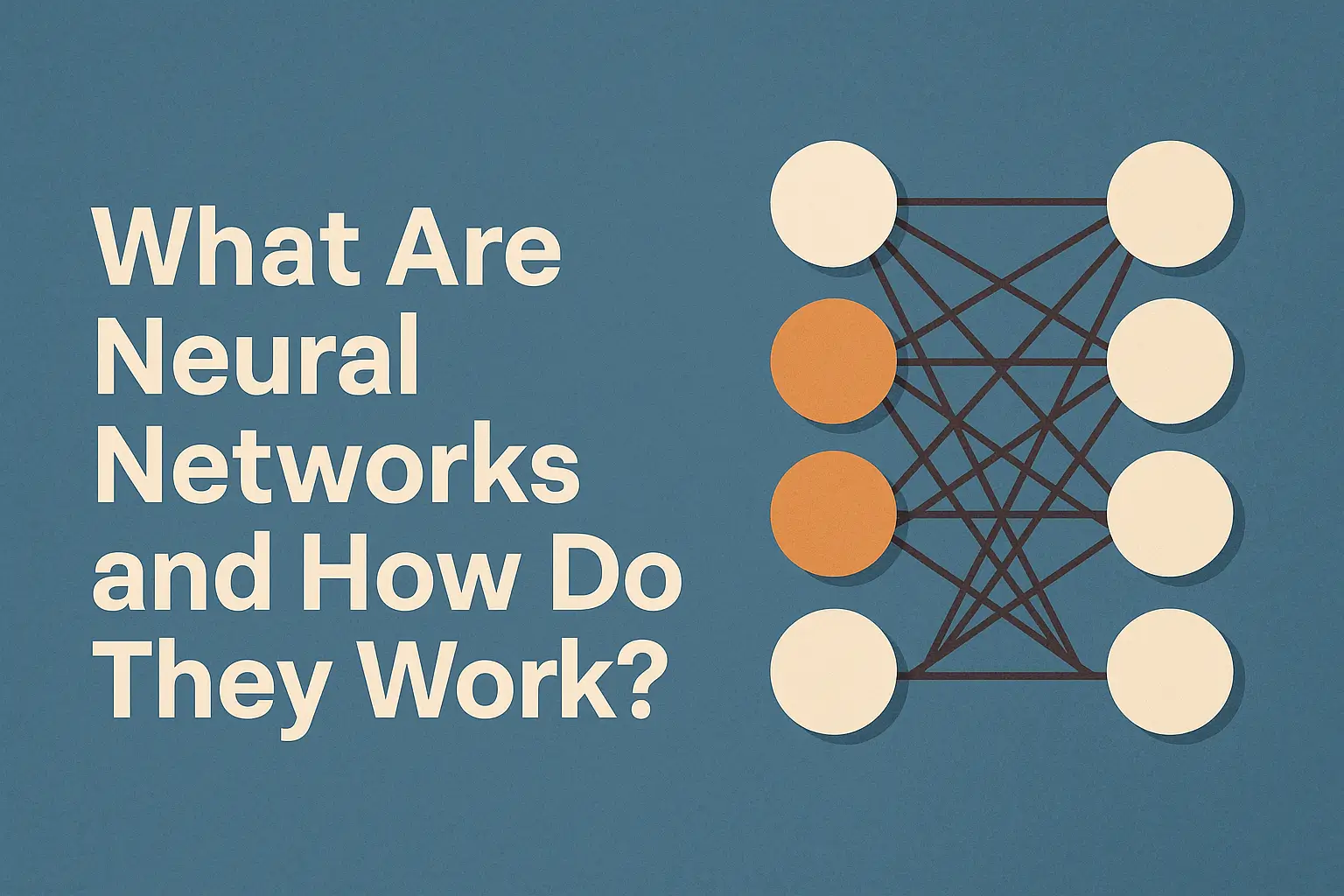Neural networks are the core of modern Artificial Intelligence (AI), powering everything from image recognition and natural language processing to self-driving cars and medical diagnostics. But what exactly are they, and how do they function?
In this article, we’ll break down the concept of neural networks in a simple, easy-to-understand way—perfect for beginners curious about how machines are learning to think like humans.
What Is a Neural Network?
A neural network is a type of machine learning algorithm modeled after the human brain. Just like the brain has neurons that transmit signals, neural networks are composed of artificial “neurons” that process and pass information.
These networks learn to recognize patterns in data, make predictions, and even generate new content—all through a process of training and adjustment.
Key Components of a Neural Network
A neural network is made up of three main layers:
1. Input Layer
- This is where data enters the system.
- Each neuron in this layer represents a feature or variable in the data (e.g., pixel values in an image, words in a sentence).
- The input is passed to the next layer for processing.
2. Hidden Layers
- These are the internal layers where the actual “learning” takes place.
- Each neuron in a hidden layer receives input, applies a mathematical function (called an activation function), and sends the result to the next layer.
- The more hidden layers a network has, the deeper it becomes (hence the term “deep learning”).
3. Output Layer
- Produces the final result or prediction.
- For example, in an image classifier, this might be a label like “cat” or “dog.”
How Do Neural Networks Learn?
Neural networks learn through a process called training, which involves the following steps:
Step 1: Forward Propagation
- Input data passes through the network layer by layer.
- Each neuron applies weights and biases, transforming the input and passing it forward.
- The final output is compared to the correct result.
Step 2: Loss Function
- A loss function measures the difference between the predicted output and the actual output.
- The larger the error, the more the network needs to adjust.
Step 3: Backpropagation
- The network uses a technique called backpropagation to adjust the weights and biases.
- It calculates how much each neuron contributed to the error and tweaks the connections accordingly.
Step 4: Optimization
- Algorithms like Stochastic Gradient Descent (SGD) or Adam optimize the learning process, making sure the network improves with each cycle.
This process repeats over thousands (or millions) of examples, gradually improving the network’s performance.
Types of Neural Networks
1. Feedforward Neural Networks
- The most basic type.
- Data flows in one direction—from input to output.
- Common in image classification or basic prediction tasks.
2. Convolutional Neural Networks (CNNs)
- Designed for image and visual processing.
- Use convolutional layers to detect patterns like edges, textures, or objects.
3. Recurrent Neural Networks (RNNs)
- Ideal for sequential data like text or time series.
- Use loops to maintain “memory” of previous inputs.
4. Transformers
- A newer and more powerful architecture, especially in natural language processing (e.g., GPT, BERT).
- Use attention mechanisms to process entire sequences efficiently.
Real-World Applications of Neural Networks
- Speech Recognition: Virtual assistants like Siri or Google Assistant.
- Medical Imaging: Diagnosing diseases from X-rays and MRIs.
- Self-Driving Cars: Analyzing road data to make driving decisions.
- Recommendation Systems: Netflix, YouTube, and Amazon suggestions.
- Fraud Detection: Identifying unusual financial transactions.
- Language Translation: Services like Google Translate.
Why Neural Networks Matter
Neural networks are revolutionizing how machines learn and interact with the world. They are behind many breakthroughs in AI and continue to improve tasks that were once thought to require human intelligence.
They:
- Learn from experience, just like humans.
- Adapt to new data and changing environments.
- Enable automation of complex and creative tasks.
Challenges and Considerations
While powerful, neural networks also come with limitations:
- Require large amounts of data: Performance improves with more training examples.
- Computationally intensive: Training deep networks requires powerful GPUs and time.
- Black-box nature: It’s often hard to understand how a neural network made a specific decision.
- Bias and fairness: If trained on biased data, they can produce biased results.
Final Thoughts: The Brains Behind Modern AI
Neural networks are at the heart of the AI revolution. They mimic the way humans learn, enabling machines to see, hear, read, and respond. As we continue to refine and expand these networks, their potential to transform industries, accelerate innovation, and enhance our daily lives is virtually limitless.
Understanding how they work is the first step to harnessing their power—whether you’re a curious beginner, a student, or a future AI developer.
